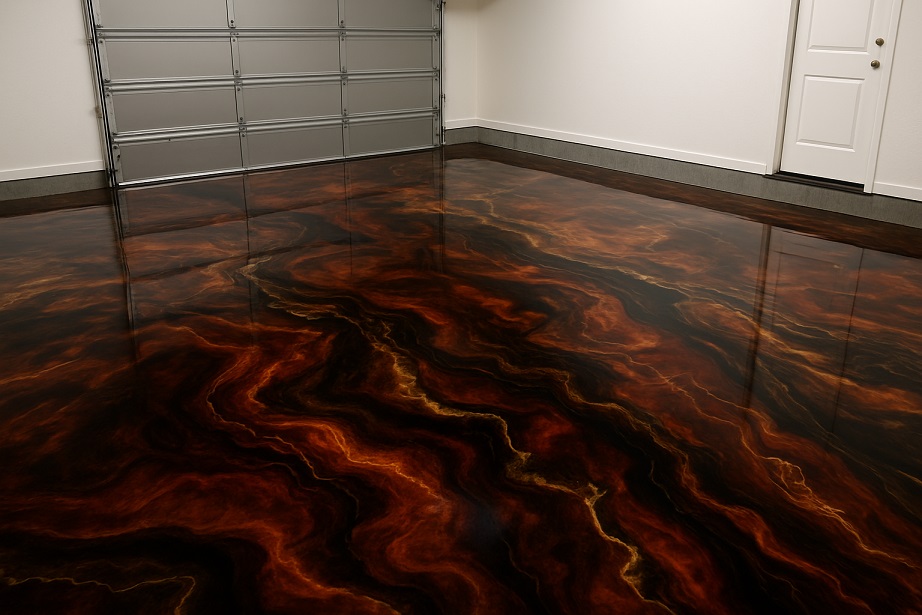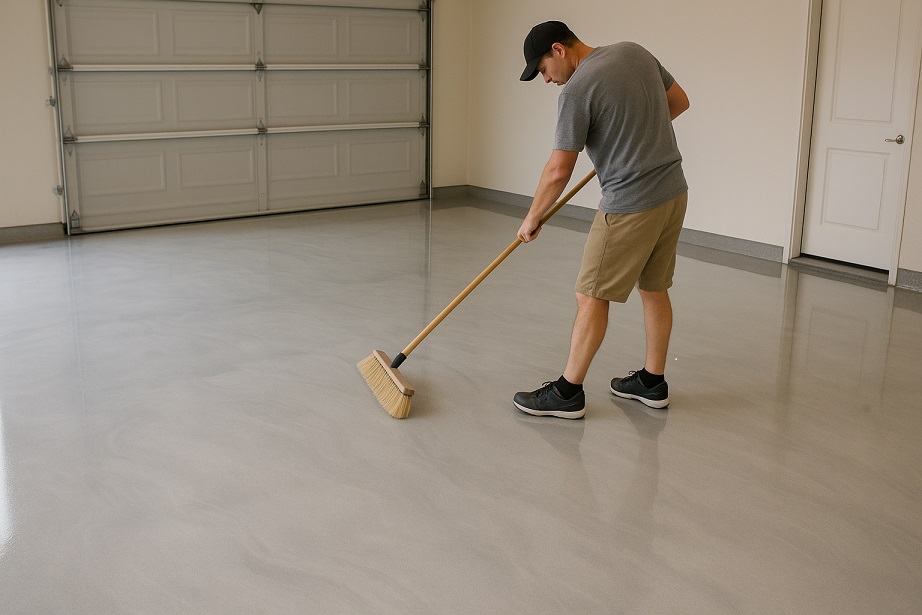Epoxy flooring has long been used for commercial buildings and industrial sites. More recently home owners have started using it on garage flooring. The choice of colors as well as combination of design and additions are nearly endless – leaving lots of room for creative design. In this article we’ll take a closer look at epoxy flooring and help you find out if it’s the right choice for your home.
Flooring examples
Flake surfaces are very popular epoxy resin designs and almost look like staring into the night sky. Once light shines on it, the reflection is amazing. Keep in mind though, if using this on your garage floor, it might be a challenge finding nuts and bolts when they fall to the ground.

Some like creating a type of marble design mixing different colors together creating a natural stone type look. It might not be ideal for a garage floor, but could look good in a kitchen or living room.

How does it get installed?

It’s best to apply epoxy resin to cement floors that’s why it’s often used in garages, store fronts or commercial buildings. Some apply it over tiled areas, but it’s best to remove tiling before application.
First the epoxy installer properly cleans the floor as it has to be cleared of any dust, dirt and grease. Additionally, if there are any cracks in the flooring, it needs to be filled up and leveled out before epoxy can be applied. Most grind down the top layer of cement flooring to ensure that the epoxy resin can bond correctly with the floor.
Next, a coat of epoxy resin is poured over the entire surface. Here is when some installers go the extra mile adding different colors and some artistic flare to give the floor a unique look. It’s then sanded down in the end and covered in final coat afterwards.
There might be additional steps depending on the amount of layers and coats you add. The video below will give you a quick overview on how it is done:
What about installing it in your home
There are some pros and cons to epoxy flooring in your home, here’s what to keep in mind.
Benefits
-It tends to be durable, as it creates a very hard surface making it difficult (not impossible) to chip or scratch the floor.
-It looks amazing with a seamless and exceptionally stylish design. Take the marble design I’ve shared with you above. This design will cost a fraction of what real marble costs and looks equally as good. You might even have more flexibility here as you can mix and match colors as you deem fit.
-It’s very low maintenance, stain resistant and water resistant which is great for kitchen or garage surfaces. No more worrying if an oil spill will stain your floor in the garage or that water spilled on your precious kitchen floor will cause damage. Additionally, cleaning is a breeze, with no cracks or nooks for dust to fall into.
Cons
Yet, it’s not completely without it’s shortcomings.
-Epoxy floors can be very slippery which can be a hazard depending on the room you use it in. For bathrooms it might not be the best choice, unless some additive is used to make it non-slip.
-If cold is an issue in your area, keep in mind that this floor can be very cold to the touch and does not insulate very well.
-When it comes to any damages, which can occur for many reasons. What if you drop something very heavy on the floor? It will chip and scratch. Quite often this means having to pay for a professional refinish depending on the severity of the damage. Not the end of the world, but worth noting.
Summary
The applications and possibilities with epoxy flooring are nearly endless. When you are looking a flooring options that is not overly expensive, works for open plan living and suits garages, consider epoxy flooring.
At IQ Construction we’ve designed many houses using various flooring techniques, of which epoxy is only one. Get in touch with us today and find out what our team or designers and builders can do for you.
Contact us here: (08) 9399 6715
